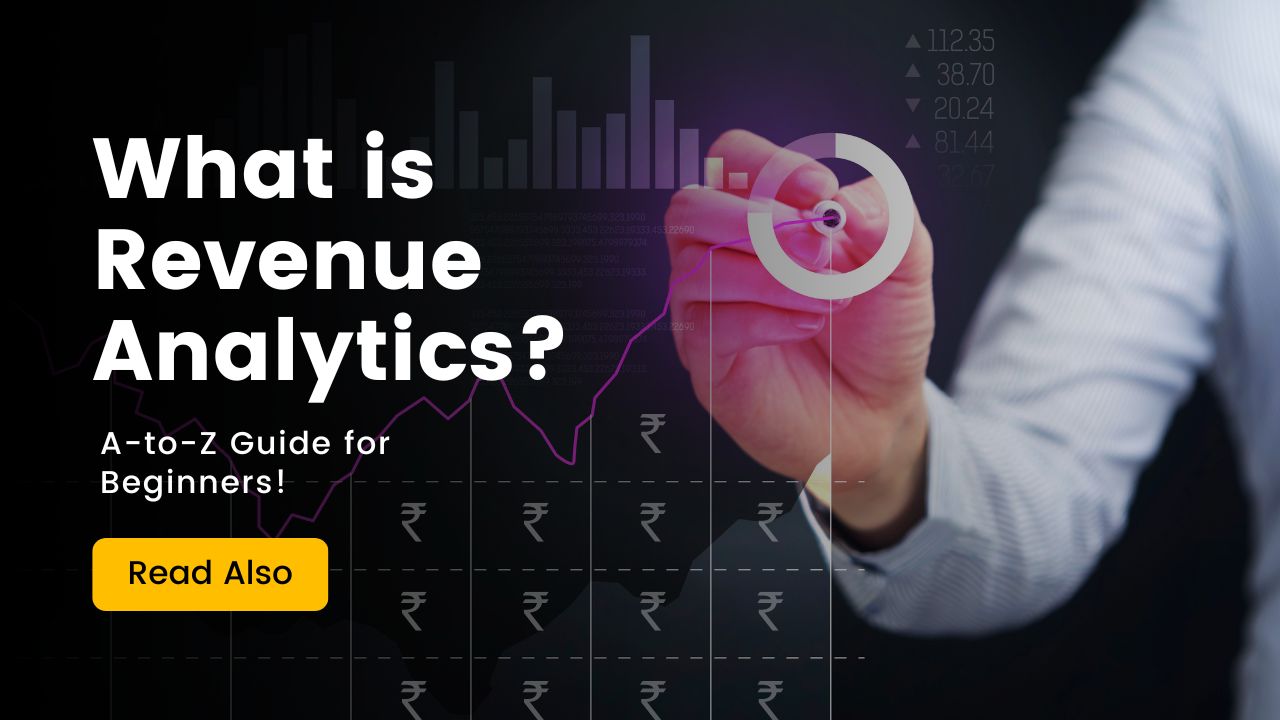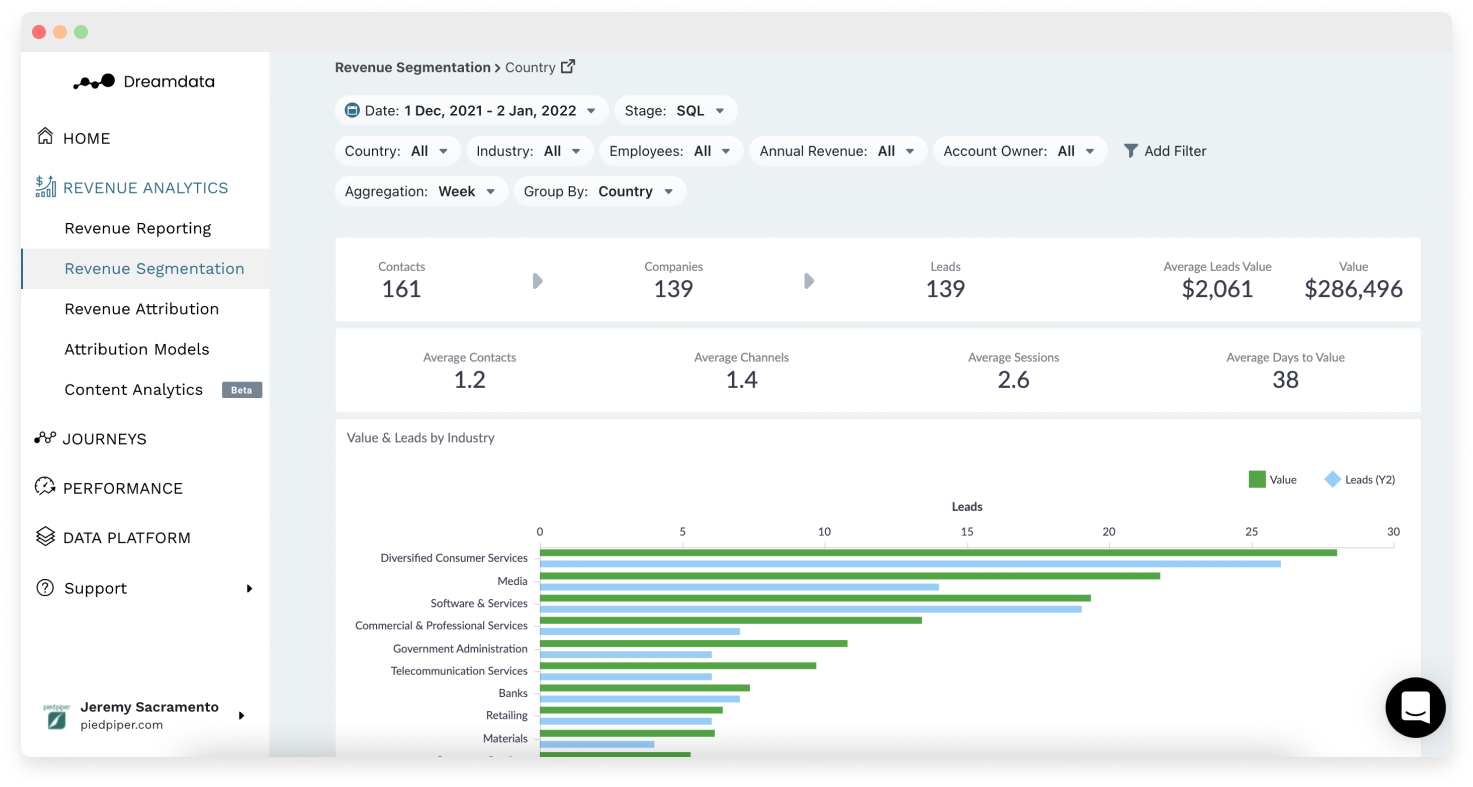In today’s article, I am going to tell you What is Revenue Analytics? so if you want to know about it then keep reading this article. Because I am going to give you complete information about it, so let’s start.
A competitive business is not characterized by working on the premise of lowered expectations. Successful enterprises strive to give more than expected and try not to fall below the ideal arc. But to define business success, you need to meet specific criteria like hitting sales targets, launching effective campaigns, etc.
What is common among top companies is the use of revenue analytics to determine the quality of their marketing efforts. Let us dive in and learn about revenue analytics, see some examples, know how it works, and understand why you need it to achieve business success.

Today’s article focuses on the same,i.e, “What is Revenue Analytics”. The articles entail each bit of information necessary for you to know.
Let’s get started!
Table of Contents
What is Revenue Analytics?
Any business works on a curve, and somewhere along that curve is where the customers are. They can either be on top or under the ideal arc. Revenue analytics is simply a process of collecting and analyzing marketing data to analyze the performance of revenue generation activities. It is a way for everyone in the marketing and finance department to explore the curve and tell at a glance how much money the customers spent and if all those spending made revenues.
With a way to know at a glance how competitive your business is, you have all the chances to improve your revenue-generating methods and duck from misfortunes due to bad business decisions. So, aside from helping you evaluate the results of your marketing efforts, it will also allow you to refine your strategies and develop fresh ideas to boost revenue further.
Doing a revenue analysis is one, if not the best, way to measure and drive profitable results. It lets you know which campaigns work and avoid guesswork when making crucial marketing decisions.
How To Start Revenue Analytics
Every company that does marketing operations needs to build a solid data and analytics foundation to support an effective revenue analytic strategy. Fortunately, plenty of resources can assist you when doing revenue analysis. Revenue analytics software is available to make this process quick and easy. Here’s a simple method to launch revenue analytics for your business:
1. Using Microsoft Excel
Excel is probably the most accessible software that you can use to complete a revenue analysis process. Using heat maps, this software will let you identify which data to focus on. You can quantify text-based data with it or calculate relevant metrics using formulas. If you are the visual type, Excel supports charts so you can visualize your data and make it easier for the marketing team to see the trends.
One of the drawbacks of using Excel is that you are going to manually encode data, create charts, make formulas, and everything else. While there is nothing wrong with doing it in an old-school way, manually collecting and inputting data makes you more prone to creating errors. Erroneous data will give you wrong calculations that can make bad decisions.
2. Using Revenue Analytics Software
A revenue analytics tool usually works like a data hub for all information about your revenue. Integrating with other marketing software allows you to generate reports from all other data across different platforms. For example, you can use your software with Google Analytics, cloud storage, and an email app. You can track all data, including real-time changes, and access it anytime and anywhere. This lets you keep abreast of the relevant information needed to make better marketing decisions.

Steps in Revenue Analytics
Generally, there are three steps that you need to do a Revenue Analysis:
- Standardize data. Launching a marketing campaign means dealing with a ton of data. Collecting relevant data, especially from multiple sources, like accounting, social media, and the supply chain, is crucial. You can only have valuable reports if you have quality data to work on.
- Selecting a tool. As said earlier, you have the choice to either do it the hard way using a manual tool or get on the easier route by having revenue analytics software. A modern analytics tool is highly recommended because it can interpret data faster and give more precise insights by generating relevant and actionable reports.
- Sharing the results. It is crucial to act on the insights derived from revenue analytics. Generate graphs and visuals to understand the findings better. You can later make digestible information that the relevant stakeholders can appreciate.
Benefits of Revenue Analytics
Revenue analytics is a universal communication tool that lets you measure relevant marketing data results to understand your overall profit standing. It can benefit your business in many ways, including:
1. Identify the revenue generated instead of the units sold
Keep in mind that a projected income is affected when you offer promos. It might be that customers only buy when your prices are marked-down. Such situations need a customer revenue analysis, allowing you to see the trends or understand customer behavior affecting the total revenue generated. This is important because it will make you wonder why you are not hitting your target profit if you keep on counting how many you sold instead of how much. Taking account of customer profitability will let you manage the problem early on.
2. Generate a sales performance breakdown
One of the essential benefits of revenue analytics is that it gives you access to the historical data of your sales performance. You can make comparisons to previous years and also create projections of the future. These make it easier to provide critical insights into which products or campaigns to focus on monthly or throughout the seasons, depending on your business. The fashion industry, for example, is seasonal. A sales revenue analysis will allow you to estimate how many items should be in production for a particular season to keep up with the demand or cut down your losses.
3. Differentiate between Sales and Profit
It is crucial to acknowledge that not every sale automatically turns into a profit. An increase in sales, for example, may still decrease in value because expenses can increase at a higher rate. A salesperson may “sell” a product, but it can mean that the customer wants the product but is unwilling to pay for it. The second scenario makes a business lose profit since time and labor were spent, but no profit was gained.
4. Understand where profit comes from
One of the ways to accelerate desirable outcomes is to measure which campaigns generate profit. Revenue analysis lets you understand what strategies customers engage with the most. Using customer data in your marketing campaigns can help increase sales because it makes you do better segmentation, targeting, and personalization.
5. Retain customers
Analyzing customers’ behavior will give you a better view of their needs and preferences. You can check which transactions are linked to their profile, and you get to build a database that contains all relevant data that will let you polish your campaigns to keep the existing customers happy.
6. Analyze the payment trends
A payment trend analysis is essential to evaluating your revenue performance because it can deliver reports crucial in making payment terms, credit, or logistics decisions. For example, a high volume of late payments can explain why the finance department has not increased the customer’s credit limit. Having this information will let you review the current collections process. You can do changes on the frequency of contacting customers about unpaid invoices, or any steps that would encourage them to pay on time. This would lead to having an improved cash flow and you no longer have to constantly worry about a high percentage of late payments for your company.
As you can see, revenue analytics makes collecting data worthwhile. It is the perfect solution to effectively monitor and manage the financial aspects of the business, especially where revenue is concerned. It gives you a deeper layer of understanding about your customers, what campaigns impact sales, what motivates customers to stay loyal, and what drives your revenue growth. Investing in analytics must be a top priority for every company that wishes to drive profitable results from its marketing data.
Conclusion:)
It is said that the future is for those who can predict it. But instead of blindly making predictions, there is a way to create the future and align it to your goals. Revenue analytics gives you the power to gain snapshots of the information that will let you analyze and mold the future of your business.
Data and analytics are the heart of marketing digitization. A modern marketer must act urgently and use revenue analytics in making informed decisions. You may use revenue analytics and marketing attribution tools to aid you in the process and recognize the many ways to increase profits.
Revenue analytics is all about making effective decisions. It helps ensure that you can implement robust marketing processes in every marketing decision that you have to implement. It is like a supernatural power that lets you take a glimpse of the customers’ spending patterns and make predictions about their contribution to your revenue.
By harnessing the advantages of using revenue analytics, you have the chance to create a more profitable future for your business.
Read also:)
- What is Agile Marketing: A-to-Z Guide for Beginners!
- What Is Multi Accounting: A-to-Z Guide for Beginners!
- 10+ Best CRM Software for Small Business: A-to-Z Guide!
So hope you liked this article What is Revenue Analytics? And if you still have any questions and suggestions related to this, then you can tell us in the comment box below. And thank you so much for reading this article.